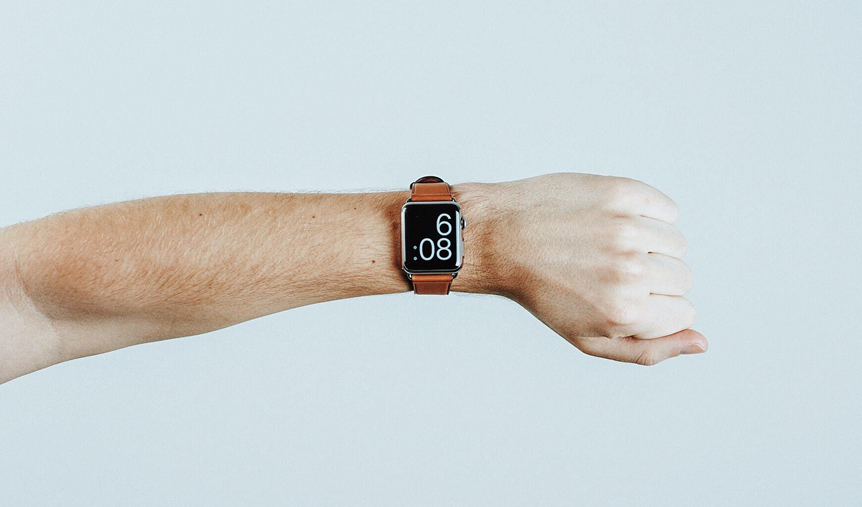The idea that habits are formed after a specific timeframe can be traced back to a best-selling book from the 1960s called Psychocybernetics (Maltz, 1960). The author, Dr Maxwell Maltz, was a plastic surgeon who observed it took around 21 days for patients to adjust to their new appearance. Maxwell then reflected on his own experiences and noticed it took him about the same time to form new habits. The notion that you can ‘fix’ your marriage, your body, your financial life, your (fill in the blank) in 21 days has been cited in countless self-help books ever since. But it doesn’t stack up to the research.
How many days does it take to form a new habit?
There is no magic number of days or hours when it comes to forming new habits (Lally et al., 2010). Habits develop as a function of frequency, not time (Clear, 2018). Repeating behaviors in a stable context, that is, establishing a routine, is more important than repeating an action for a set number of days. How long a habit takes to form depends on how long it will it take you to repeat this behavior so much that the structure of your brain changes to become efficient at the activity.
A look at the neuroscience of habits
The human brain contains around 100 billion nerve cells that look and act like miniature electrical cables (Voytek, 2013). Each neuron has thousands of connections to other neurons resulting in an incredibly complex neural network containing trillions of connections (Goldman, 2010). Let’s stop for a moment to really appreciate the scale of these numbers. Our brains are an extraordinary feat of creation!
Neurons ‘talk’ with each other at a cellular level. This communication begins when a small electrical current travels down the length of one nerve. However, when it reaches the end, there is a problem. The next neuron is a short distance away and there is no bridge. The most complex organ on the planet has devised an ingenious solution. The electrical signal reaching the end of the line triggers the release of a chemical called a neurotransmitter. The chemical makes the journey across the gap, known as a synapse. When the neurotransmitter reaches the next neuron, a new electrical signal is activated and the communication process continues.
In 1949 Canadian psychologist Donald Hebb proposed a neural mechanism to explain learning and memory (Hebb, 1949). His theory, which came to be known as Hebb’s Rule, was neurons that “fire together wire together”. The more often a particular circuit in the brain is activated (the firing), the stronger the circuit (the wiring) becomes.
Habits and long-term potentiation: Repetition is key
Nearly two decades later, experimental evidence for Hebb’s rule was finally gathered. Terje Lømo discovered that with repeated firing, synapses between neurons are strengthened, a phenomenon known as long-term potentiation (Lømo, 2003).
Therefore, to form a new habit, repetition is the key because it’s what drives the brain to rewire. Eventually this rewiring leads to ‘automaticity’ and we no longer have to think about what we’re doing. This is the point at which we can say we have truly formed a habit.
But, you’re probably still after a ballpark (we see you!), so let’s take a look at some research. One study asked people to record on charts how easy it was to carry out a new routine once each day (Gardner et al., 2012). By plotting this data on a graph, the researchers were able to figure out exactly when automaticity develops. They discovered that it increases sharply at first and then starts to level off, or plateau, over time. Gardner and colleagues’ study reported it takes an average of 66 days for automaticity to develop leading many experts to say habits take about 10 weeks to form.
But this is a mistake! There is a subtlety in the data from this 66 days study. While the average length of time for a new habit to become automatic was 66 days, the range was an astonishing 18 – 254 days! This means that there is enormous variation in how long a habit takes to become established depending on the difficulty of the routine. Something as simple as drinking a glass of water with lunch each day takes less time to become a habit compared with a daily exercise routine (Gardner et al., 2012).
Habit change requires a bit of patience and a focus on the “long game”. It’s important to know that habits develop slowly as unrealistic expectations may cause you to give up. Stay the course and focus on the reps!
Takeaways
- It doesn’t take 21 days to form a habit, nor does it take 66. Because habits develop as a function of frequency, not time, it’s impossible to assign a number.
- How long a habit takes to develop depends on both the complexity of the task and how often it is repeated.
- To form a new habit more quickly focus on developing a routine and repeating it frequently.
- Automaticity is the hallmark of a habit. Repetition causes the rewiring in the brain necessary for automaticity.
References:
- Clear, J. (2018). Atomic Habits. Penguin Random House UK.
- Gardner, B., Lally, P., & Wardle, J. (2012). Making health habitual: the psychology of ‘habit-formation’ and general practice. British Journal of General Practice, 62(605), 664-666. https://bjgp.org/content/62/605/664
- Goldman, B. (2010). Stunning details of brain connections revealed. Science daily. Retrieved 14 October 2022 from https://www.sciencedaily.com/releases/2010/11/101117121803.htm
- Hebb, D. O. (1949). The organization of behavior; a neuropsychological theory. Wiley.
- Lally, P., Van Jaarsveld, C. H. M., Potts, H. W. W., & Wardle, J. (2010). How are habits formed: Modelling habit formation in the real world. European Journal of Social Psychology, 40, 998–1009. https://doi.org/10.1002/ejsp.674
- Lømo, T. (2003). The discovery of long-term potentiation. Philosophical Transactions of the Royal Society B, 358(1432), 612-620. https://doi.org/10.1098/rstb.2002.1226
- Maltz, M. (1960). Psychocybernetics : A New Technique for Using Your Subconscious Power. Wilshire Book Company.
- Voytek, B. (2013). Are There Really as Many Neurons in the Human Brain as Stars in the Milky Way? nature.com. Retrieved 14 October 2022 from https://www.nature.com/scitable/blog/brain-metrics/are_there_really_as_many/



